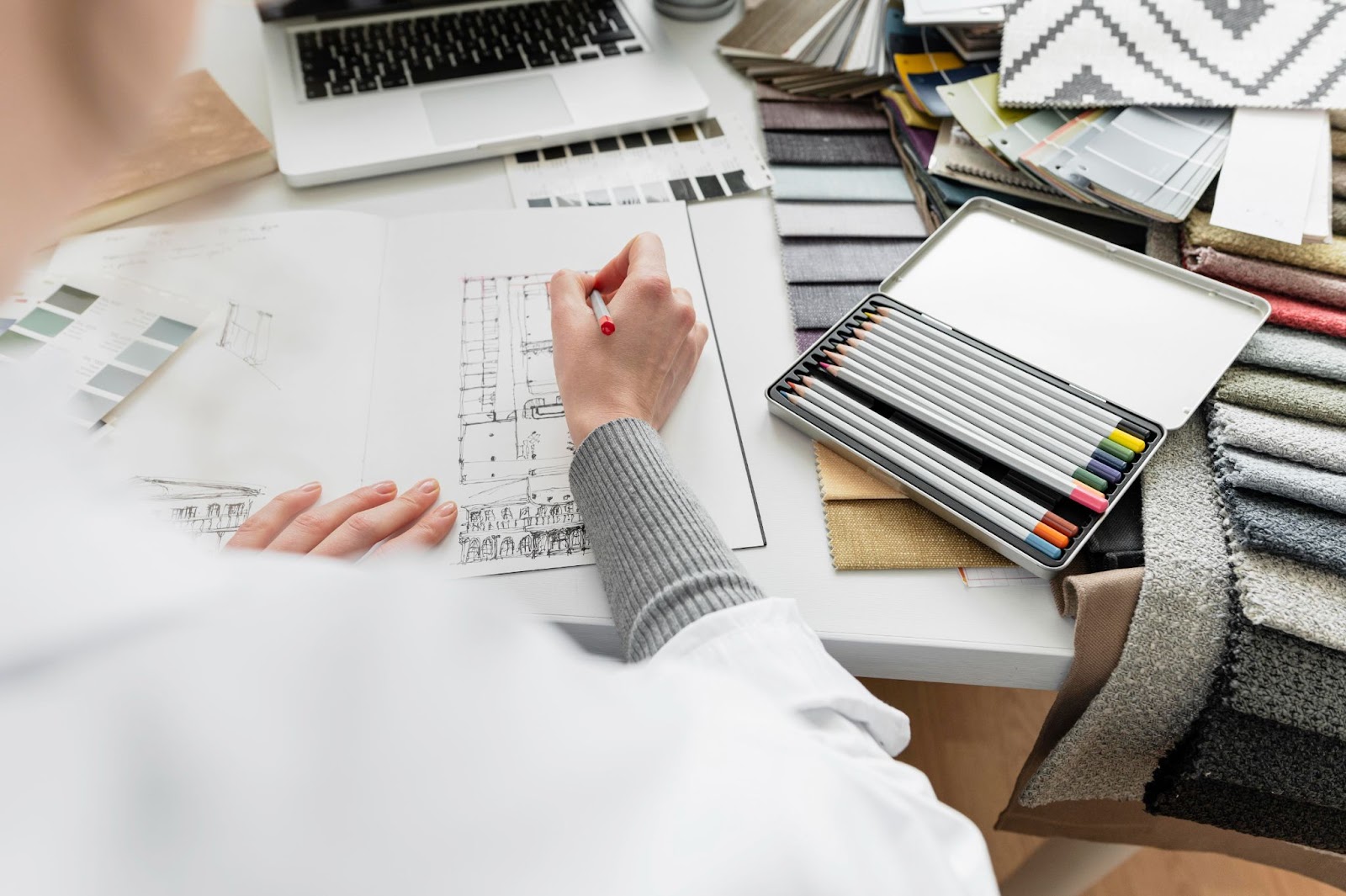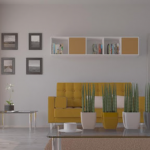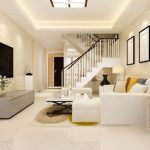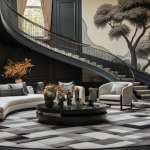
Home Designer Interiors : The 5 Most Important Principles
The design of a home’s interior goes beyond aesthetics and style. Home Designer Interiors should represent the inhabitants’ lifestyle and personality, establish a sense of comfort and relaxation, and be efficient and cost-effective. Interior designers understand the principles of achieving important elements such as balance, light, contrast, and scale and use them to create beautiful and functional spaces. This blog will discuss the five most important principles of home designer interiors.
Table of Content
Home Designer Interiors : The 5 Most Important Principles
I. Balance:
Balance is an important principle in home designer interiors as it creates a sense of harmony and order in a space. Balance is achieved by creating visual equilibrium on either side of a room or space. This can be done by evenly distributing furniture and accessories and using colour and texture.
For example, a room with dark furniture and light walls can be balanced by adding lighter accessories, such as a rug or curtains, to the room’s dark side. In addition, rooms can be balanced by having symmetrical furniture placement or a focal point in the centre of the room.
II. Light:
Light is another important principle for an Interior Designer, as it can affect the mood of the space. Natural light from windows and skylights can brighten a room and create a warm and inviting atmosphere. In addition, artificial lighting can create different moods and accents in the room.
For example, recessed lighting can be added to create a subtle, calming ambience, or directional lighting can be added to highlight specific areas in the room. In addition, dimmers can be used to adjust the lighting to match the desired mood.
III. Contrast:
Contrast is another important principle in home designer interiors as it can draw attention to certain elements in the room. Contrast can be achieved through contrasting colours, textures, and shapes. Contrast can also be achieved by utilizing different materials such as wood, metal, and stone.
For example, a room with neutral walls can be contrasted by adding a bolder colour for the furniture or accent pieces. In addition, a room with a lot of wood furniture can be contrasted by adding metal or stone elements. Contrast can also be achieved by using different shapes and sizes of furniture and accessories.
IV. Scale:
Scale is another important principle in home designer interiors as it can create a sense of harmony and balance in the room. Scale refers to the room’s size and proportion of furniture and accessories. Too much furniture in a room can make it feel cluttered and cramped, while too little can make it feel empty and sterile.
For example, furniture and accessories should be chosen based on the size of the room. Smaller accessories should be used in smaller rooms, while larger ones should be used in larger rooms. In addition, furniture should be arranged with the size of the room and other furniture to create a sense of balance.
V. Personalization:
Personalization is an important principle in home designer interiors as it can help create a unique and distinctive atmosphere in the room. Personalization can be achieved through art, photographs, and other personal items.
For example, photographs of family and friends can be used to create a homey atmosphere. In addition, artwork can be used to add colour and personality to the room. Personal items, such as books and heirlooms, can also be used to create a unique and intimate atmosphere.
Also Read:- Interior Designing Forecast for 2024 Curated by Interior Designers in Mumbai
Conclusion:
Home designer interiors should be designed based on balance, light, contrast, scale, and personalization principles. These principles help create beautiful and functional spaces that reflect the lifestyle and personality of its inhabitants. By following these principles, Interior Designers can create a home that is both aesthetically pleasing and comfortable. Get in touch with Rennovate Interiors for more queries.






